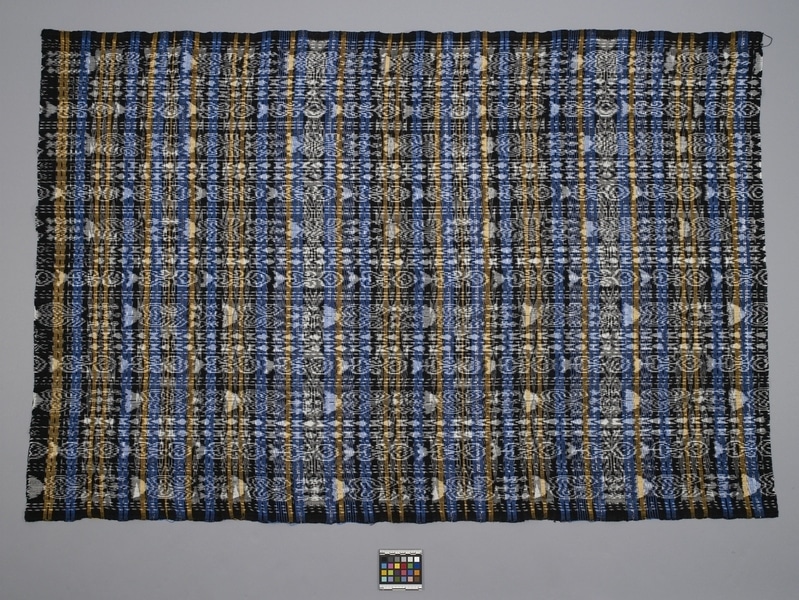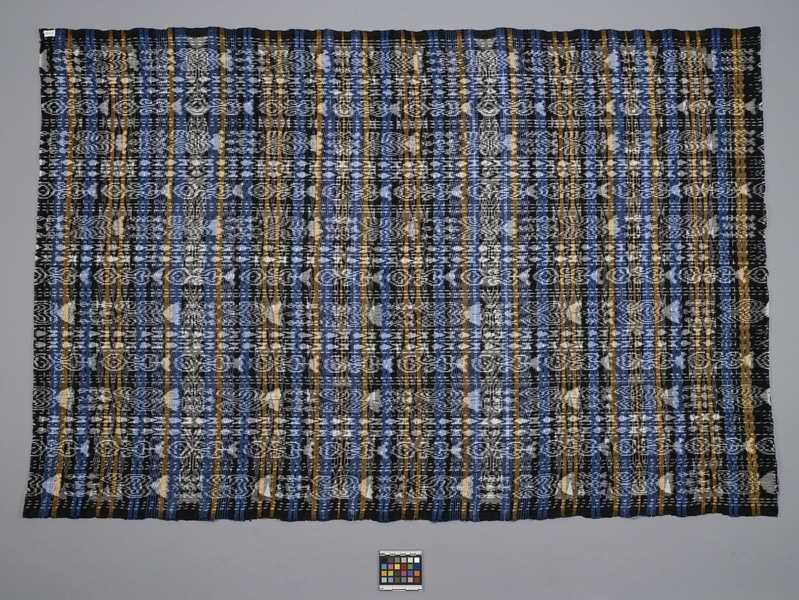Skirt Item Number: Sa203 from the MOA: University of British Columbia


Description
Sample of double-ikat resist-dyed woven cotton textile. The textile has both warp and weft patterning with a traditional pattern of black, blue, yellow, white and metallic gold stripes and an ikat design, mainly curvilinear, in bands of white.
History Of Use
Weaving with resist-dyed yarns is an important occupation for many people of Salcaja and it is pursued intensely. Many activities in town are related to this work. When resist-dyed yarn patterns are included in both the warp and weft the total effect can be that of a mass of undulating colours and shapes, so that the designs are not correlated. When the patterning is either warp-wise or weft-wise, some of the motifs are more easily recognizable in patterns such as human figures, vases of flowers, etc. Jaspe weaving in Salcaja is done by non-Indians (Lambert).
Narrative
In Salcaja, as in other places, the number and appearance of the different tie-dyed motifs changes. Sometimes more than 8 motifs are used in the weft pattern repeats for each length, but usually fewer and simpler repeats are used in the warp.
Specific Techniques
Jaspé: compound ikat (tie-dyed) warp and weft.
Item History
- Made in Salcaja, Quetzaltenango, Guatemala before 1976
- Collected during 1976
- Owned by Inge Ruus before August 5, 1977
- Received from Inge Ruus (Seller) and Museum of Anthropology Donations Fund (Funding source) on August 5, 1977
What
- Name
- Skirt
- Identification Number
- Sa203
- Type of Item
- skirt
- Material
- cotton fibre, dye and metal
- Manufacturing Technique
- resist dyed, woven and machine spun
- Overall
- height 99.0 cm, width 150.0 cm
Who
- Culture
- Quiche
- Previous Owner
- Inge Ruus
- Received from
- Inge Ruus (Seller) and Museum of Anthropology Donations Fund (Funding source)
Where
- Holding Institution
- MOA: University of British Columbia
- Made in
- Salcaja, Quetzaltenango, Guatemala
When
- Creation Date
- before 1976
- Collection Date
- during 1976
- Ownership Date
- before August 5, 1977
- Acquisition Date
- on August 5, 1977
Other
- Item Classes
- textiles
- Condition
- good
- Accession Number
- 0404/0010